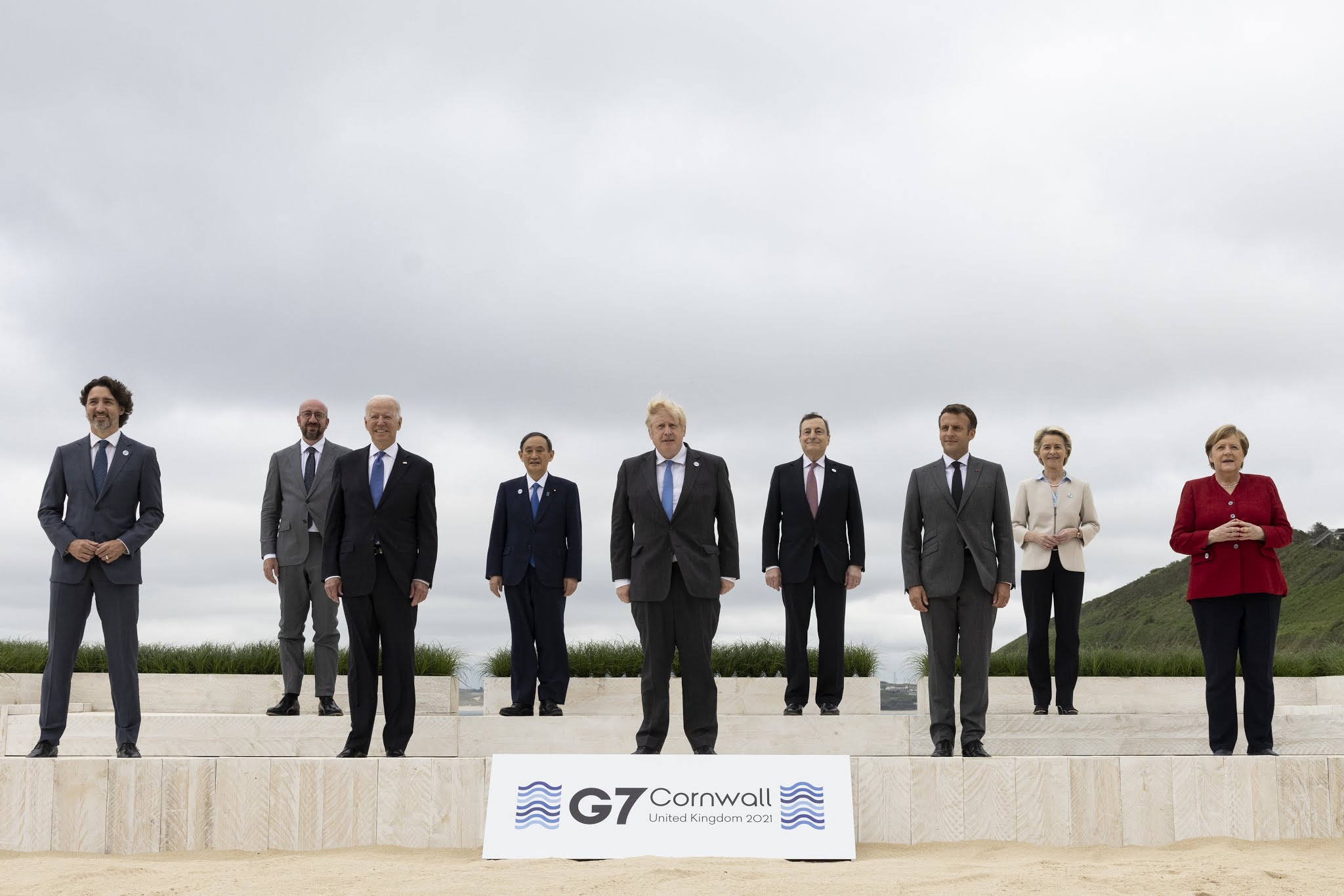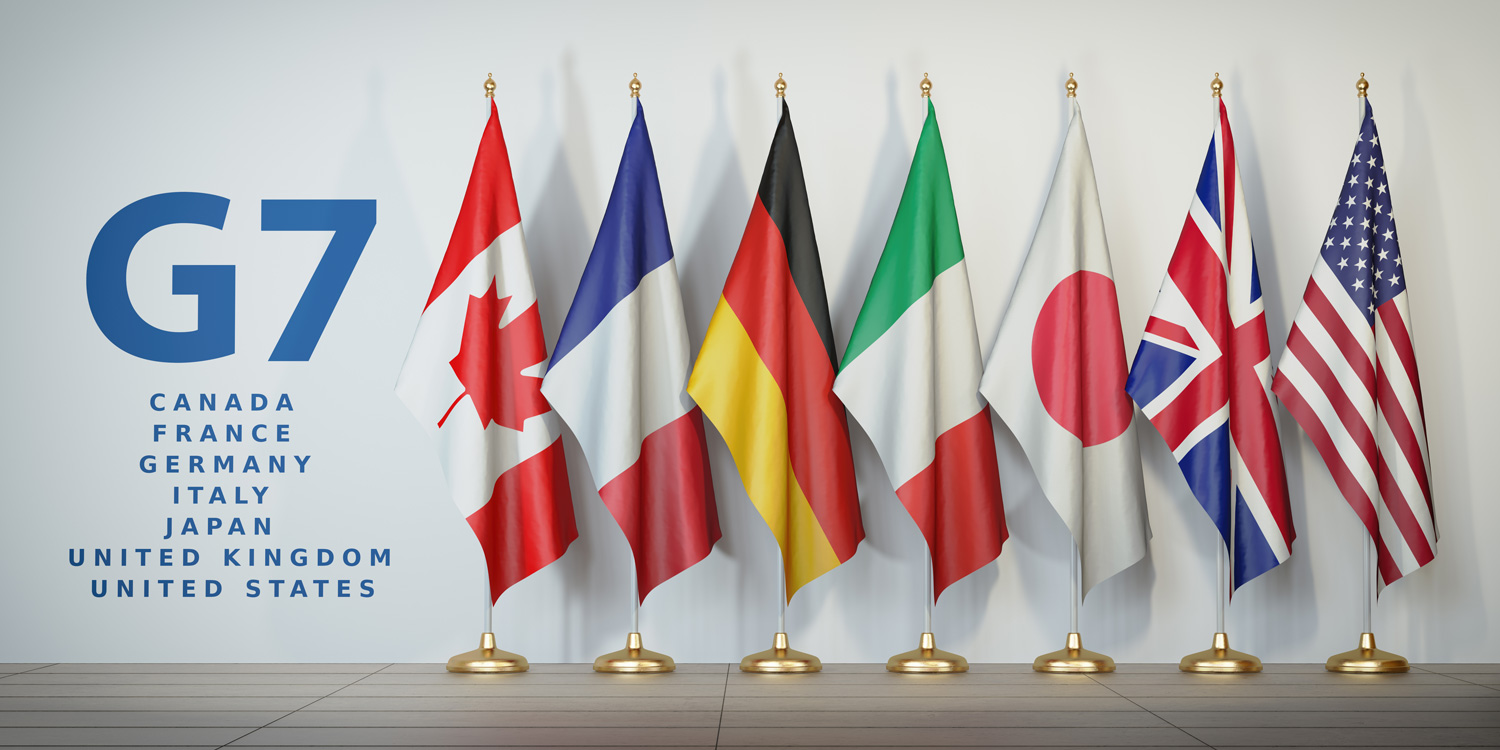The G7 summit is a political organization/meeting of the seven largest ‘advanced’ economies in the world and comprises the UK, United States, Canada, Japan, France, Italy and Germany. The Group of Seven (G7) meet on a semi-regular basis to discuss global issues, form agreements and publish statements about global events with the annual summit, involving the leaders of the G7, as the headline event.
The G7 summit in 2021 took place in Cornwall, UK, between 11th and 13th June. As well as the G7 leaders, representatives from the EU, India, South Korea and Australia also attended. The agenda for the 2021 G7 event included recovery from COVID, climate change and global trade. As leaders of the largest economies in the world (aside from China), these discussions and any commitments made can have a profound impact on people across the world. This year’s summit was also viewed as being particularly important in the build up to COP26, the UN climate change conference happening in Glasgow in November. COP26 is seen as crucial for progress towards reaching the 1.5 degree global warming limit. So, what aspects of climate change were discussed and what came out of the discussions?

The main climate announcements were the recommitment to the 1.5 degree global warming threshold from the Paris Agreement and the reiteration of a pledge made in 2009 by developed countries, who agreed that by 2020 they would contribute $100 billion a year in climate finance to developing nations to help them cut their emissions. The finance is intended to allow developing countries to build resilience to climate change impacts, protecting nature, reducing greenhouse gas emissions and align their development plans to net-zero carbon futures. Recent contributions have been hampered by the COVID crisis but this reiteration should bring about another increase in the annual financing that reached approximately $79 billion in 2018.
The G7 leaders recommitted to reducing their own emissions to net-zero by 2050 at the latest, with a more aggressive target of a collective reduction of greenhouse gas emissions in 2030 being half of 2010 emissions. The UK went further than this and committed to cut emissions by at least 68% by 2030 relative to the 1990 levels.
Another major focus during the summit was placed on coal as a source of energy, which is still the dirtiest fuel used globally, with coal fired power plants releasing more greenhouse gasses per unit of energy produced than any other source. The leaders pledged to phase out coal burning in a three-pronged approach: unless it included carbon capture technology, by ending government support for coal power by the end of 2021, as well as ending funding for new coal generation in developing countries. To support this, they also committed to spending £2 billion to assist these developing countries in financing alternative fuels.

A number of other announcements were made but haven’t received as much focus in the news such as the support for a technology-driven transition to net zero and another commitment to protect biodiversity and tackle deforestation. The technology driven transition is most relevant to HydroGenesis, especially for the energy section, where there were intentions stated to increase energy efficiency, accelerate the roll-out of renewable and other zero emissions energy, reduce waste and leverage innovation. For homes and buildings in particular, the G7 recognised the ‘need for an urgent step change’ in the uptake of renewable heating and cooling systems as well as a reduction in energy demand. If these words are converted to funding opportunities and simple legislation, then it could certainly help HydroGenesis with our targets in powering and heating buildings with renewable energy.
Due to the high profile nature of the events, the G7 is often used as an opportunity for members of the public and various NGOs to gain publicity into their ideas and opinions on the same global issues that are being discussed by the leaders. This year, a particularly impressive statement was made by a collection of artists – in homage to Mount Rushmore in the United States, the leaders of the G7 were depicted in a sculpture made entirely of e-waste, about 20,000 pieces of discarded technology, called ‘Mount Recyclemore’ (see below. The aim was to highlight our throwaway nature and promote longer use, reuse, recycling or donating old technology instead of throwing it away, something HydroGenesis certainly support.
HydroGenesis welcome all commitments towards improving the climate of our planet. Hopefully, the commitments made during this G7 event kick start a significant uptick in action throughout 2021 and into the future with COP26 providing another opportunity to push this agenda, especially in assisting developing countries.


